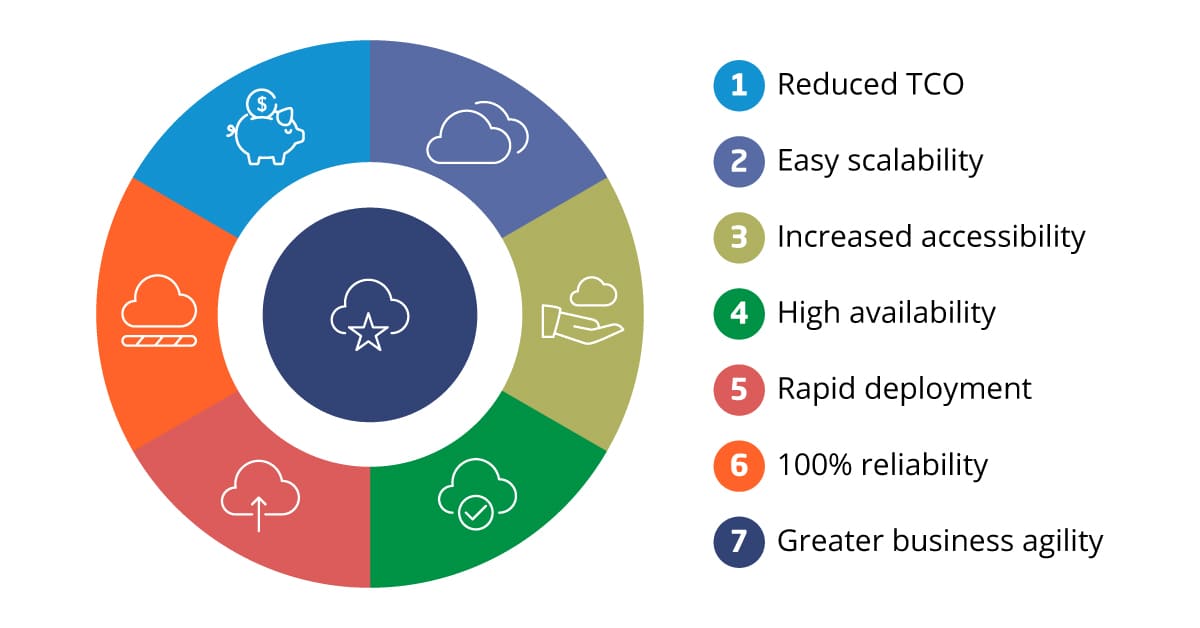How to increase the IT infrastructure efficiency in 3 months
-
9225
-
0
-
18
-
0
One of the most daunting and pressing tasks for any company is the continuous push for improvement of their IT infrastructure. We describe how to increase the IT infrastructure efficiency in 3 months.
There is a publicly available Forrester report on IT efficiency from 2016, revealing the fact that nearly ⅔ of the businesses state the need to increase the IT infrastructure efficiency as their primary goal. In addition, 68% of the executives that participated in that study named cutting the spending as the critical task for ensuring the healthy bottom line and reinvigorating their businesses.
Thus said, the businesses should aim to both cut the expenses and increase the efficiency of their IT infrastructure operations. Here is how this can be done over the course of 3 months.
Audit your existing IT infrastructure
Every business grows and evolves through it history. Sometimes the systems that worked just fine a couple of years ago cannot keep up the pace with the evolved business workflows and increased workloads. This means it’s time to decommission them and move to using more up-to-date technology, be it the transition from on-prem servers to the cloud or simply replacing multiple MS Excel tables with an integrated CRM system.
Such an audit can be a painstaking enterprise, as the personnel grows attached to familiar tools and practices. However, this is required to build the scheme of the existing IT infrastructure and determine the outdated and unused hardware, software and processes. Such a process can take from 1 week to a month, depending on the complexity of the systems used by your business.
Consider using virtualization for your IT systems
Once you have the full picture of the existing IT infrastructure, you can determine the existing weak spots and bottlenecks, both regarding the servers and the business processes. It might become obvious that some servers are underused, so you essentially pay for the resources you do not use. Virtualization is the way to deal with this issue, as it allows combining the resources of several servers to create a shared pool that will underpin all of your mission-critical systems.
Using virtualization can enable shortening the number of servers in use from a dozen to merely a handful, greatly reducing the TCO. However, this approach poses another danger, as in case any of these servers go down, the whole system is at risk. Running backup servers is possible, yet it means some resources are still used sub-optimally. This is why the transition to the cloud is a viable solution for many businesses, as the cloud platforms provide virtualization by default while delivering additional benefits:
- Reduced TCO, as there are no upfront expenses, less software license fees and ongoing updates
- Easy scalability, as the business can scale up and down on demand and pay only for the resources used
- Increased accessibility, as when the data is moved to the cloud the collaboration becomes much easier
- High availability, as the cloud architecture allows relocating your applications and workloads to the availability zone close to your customers with ease
- Rapid deployment, as new servers can be provisioned within minutes on request or automatically
- 100% reliability, as replacing the server hardware components is done by the data center employees in the background, so your services are always up and running
- Greater business agility, as cloud deployment ensures faster delivery of value to the customers, thus providing more flexible and efficient business operations.
At IT Svit we have ample experience with enabling the virtualization, cloud transition and more advanced DevOps services for our customers. Based on our experience, this can take from 1 to 2 months to accomplish this step.
Support the ongoing growth with the transition to DevOps
You can’t expect to gain better results by doing the things the way you always did. Transition to the new type of IT infrastructure (virtualized on-prem servers, public or private cloud or hybrid strategy, the mix of both) requires moving to new types of IT operations management and maintenance — transition to DevOps.
Aside of making the most of the existing IT infrastructure, lowering the costs of the IT department operations and building a solid ground for ongoing growth, this endeavor helps future-proofing your business to ensure it is agile and able to adapt to rapidly changing market conditions. This process is ongoing, yet the transition itself and the initial training takes around 1 month.
Final thoughts on the ways to increase the IT infrastructure efficiency
At IT Svit we are accustomed to helping the businesses complete their digital transformation, begin working according to the DevOps best practices and helping accomplish the projects that maximize the efficiency of all business operations. As you can see, the business can greatly increase the IT infrastructure efficiency in 3 months or slightly more, depending on the complexity of the IT systems in place, the available budget and the C-suite’s determination to support the initiative.
Would you like to rap the benefits of using the latest technology and the DevOps best practices to ensure your business is a lean, mean, efficient machine? Order the free DevOps consultation today and create a roadmap for a successful digital transformation for your business!


